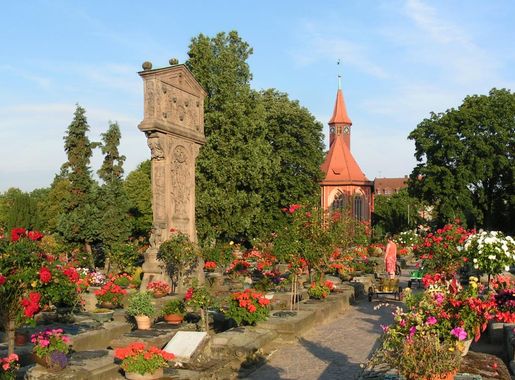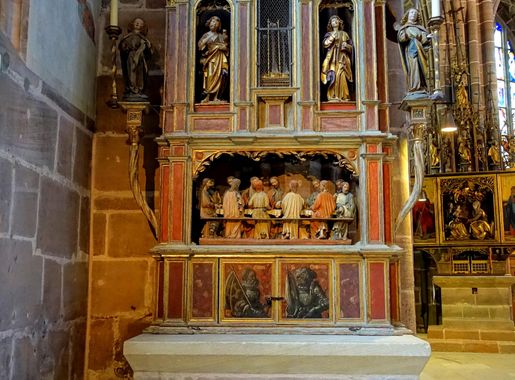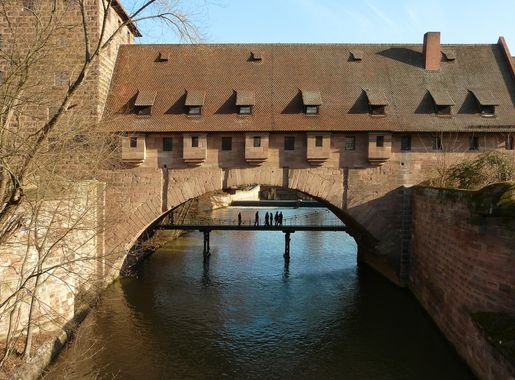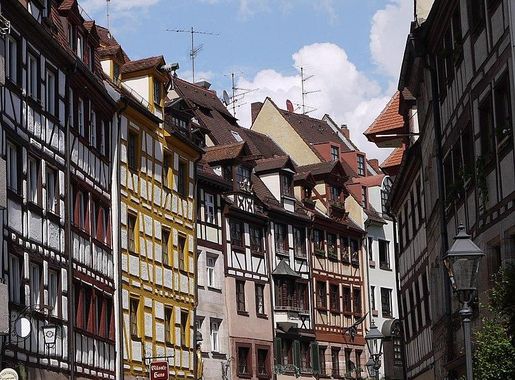
St. Johannis: A Historic Jewel in Nuremberg
Discover the charm of St. Johannis, Nuremberg's historic neighbourhood, where history, culture, and modern life converge in a picturesque setting.
Nestled in the heart of Nuremberg, St. Johannis is a charming neighbourhood that effortlessly blends history, culture, and modernity. Known for its picturesque streets and rich heritage, this area offers tourists a unique glimpse into both the past and present of Nuremberg. The neighbourhood is home to the beautiful St. John's Cemetery, one of the oldest and most significant cemeteries in Germany. Wander through its tranquil paths and discover the final resting places of many notable figures, including the famous painter Albrecht Dürer. The cemetery is a serene escape from the bustling city, offering a peaceful atmosphere and stunning historical monuments. St. Johannis is also renowned for its delightful mix of traditional and contemporary architecture. Stroll through the neighbourhood to admire the well-preserved half-timbered houses, charming courtyards, and vibrant gardens. The area is dotted with quaint cafes, inviting restaurants, and unique shops, perfect for a leisurely afternoon of exploration. Food enthusiasts will find much to love in St. Johannis, with a variety of eateries offering both local Franconian cuisine and international delights. Don't miss the chance to sample Nuremberg's famous sausages, freshly baked pretzels, and delectable pastries. For art and history lovers, the neighbourhood boasts several galleries and museums, each telling a part of Nuremberg's rich cultural story. The sense of community here is palpable, with friendly locals who are always ready to share their favourite spots and stories.
Local tips in St. Johannis
- Visit St. John's Cemetery early in the morning for a peaceful experience and to capture the best photographs.
- Wear comfortable shoes as the streets are cobblestone and there is much to explore on foot.
- Try the local Franconian cuisine at one of the traditional restaurants in the area.
- Take time to explore the small shops and galleries, as they often feature unique, locally-made items.
- Engage with the locals; they are friendly and can provide valuable insights and recommendations.
St. Johannis: A Historic Jewel in Nuremberg
Nestled in the heart of Nuremberg, St. Johannis is a charming neighbourhood that effortlessly blends history, culture, and modernity. Known for its picturesque streets and rich heritage, this area offers tourists a unique glimpse into both the past and present of Nuremberg. The neighbourhood is home to the beautiful St. John's Cemetery, one of the oldest and most significant cemeteries in Germany. Wander through its tranquil paths and discover the final resting places of many notable figures, including the famous painter Albrecht Dürer. The cemetery is a serene escape from the bustling city, offering a peaceful atmosphere and stunning historical monuments. St. Johannis is also renowned for its delightful mix of traditional and contemporary architecture. Stroll through the neighbourhood to admire the well-preserved half-timbered houses, charming courtyards, and vibrant gardens. The area is dotted with quaint cafes, inviting restaurants, and unique shops, perfect for a leisurely afternoon of exploration. Food enthusiasts will find much to love in St. Johannis, with a variety of eateries offering both local Franconian cuisine and international delights. Don't miss the chance to sample Nuremberg's famous sausages, freshly baked pretzels, and delectable pastries. For art and history lovers, the neighbourhood boasts several galleries and museums, each telling a part of Nuremberg's rich cultural story. The sense of community here is palpable, with friendly locals who are always ready to share their favourite spots and stories.
Iconic landmarks you can’t miss
Imperial Castle of Nuremberg
Explore the Imperial Castle of Nuremberg, a stunning medieval fortress with breathtaking views and rich historical significance.

Albrecht Dürer's House
Discover the timeless artistry of Albrecht Dürer in his historic home and museum in Nuremberg, where creativity and history intersect.

Hesperidengärten
Discover the enchanting Hesperidengärten in Nuremberg, a serene baroque garden rich in history and beauty, perfect for relaxation and exploration.
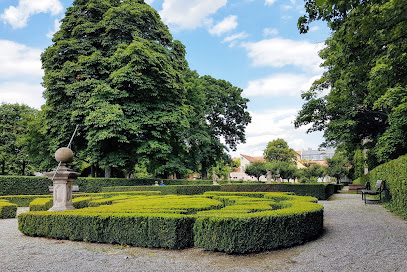
Johannisfriedhof Cemetery
Discover the tranquil beauty and rich history of Johannisfriedhof Cemetery, a serene oasis in Nuremberg that reflects the city's cultural heritage.
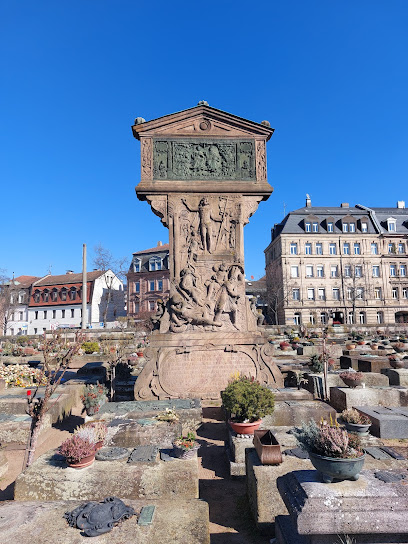
Barockgarten St. Johannis
Explore the serene Barockgarten St. Johannis in Nuremberg, a baroque garden showcasing lush landscapes, historical architecture, and tranquil beauty.

Crossbowmen fountain
Discover the historical Crossbowmen Fountain in Nuremberg, a captivating blend of artistry and medieval heritage that enchants every visitor.
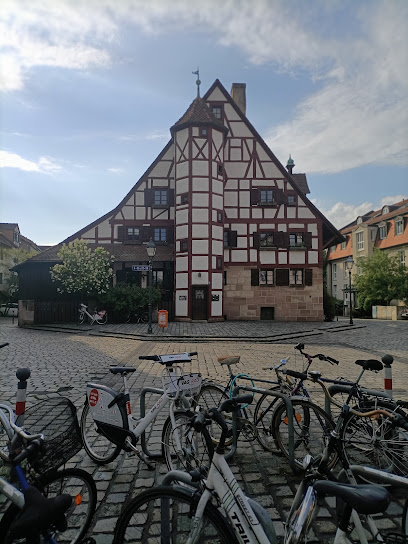
Statue Ludwig van Beethoven
Experience the cultural heartbeat of Nuremberg at the Statue of Ludwig van Beethoven, a tribute to the legendary composer amidst historical beauty.

Jugendkeller St.Johannis
Experience tranquility and rich history at Jugendkeller St. Johannis, a hidden gem church in the heart of Nuremberg, perfect for reflection and exploration.
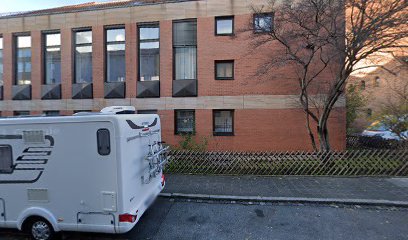
Holzschuherkapelle
Discover the tranquil beauty of Holzschuherkapelle, a historic chapel nestled in the serene Johannisfriedhof of Nuremberg, Germany.
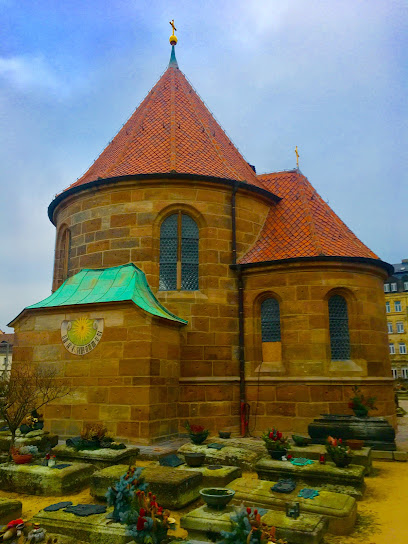
Kunst am Bau 'Energy is life - Life is Energy'
Explore the vibrant 'Energy is life - Life is Energy' graffiti in Nuremberg, a stunning fusion of urban art and local culture that invigorates city life.
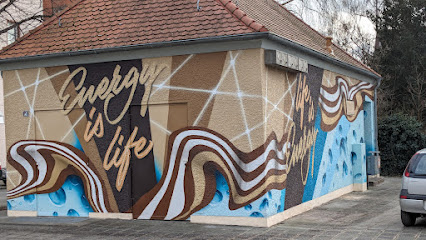
Unmissable attractions to see
Handwerkerhof Nuremberg
Experience the charm of Handwerkerhof Nuremberg, a medieval artisan village showcasing Bavaria's rich craftsmanship and vibrant culture.

Memorium Nuremberg Trials
Explore the profound legacy of justice at the Memorium Nuremberg Trials, a key historical site in Nuremberg, Germany, dedicated to human rights and accountability.
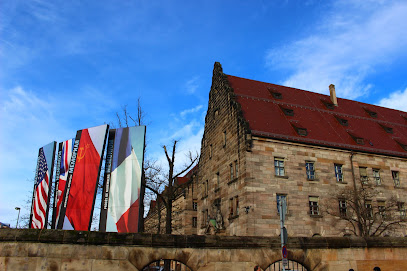
Hesperidengärten
Discover tranquility at Hesperidengärten, Nuremberg's hidden baroque garden, offering serene landscapes and natural beauty in the heart of the city.
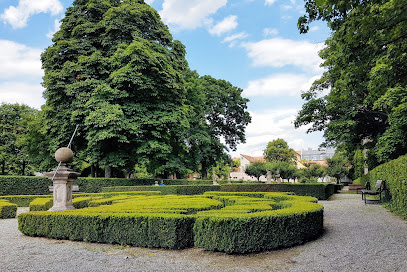
Barockgarten St. Johannis
Experience the serene charm of Barockgarten St. Johannis in Nuremberg, where lush gardens and historical beauty create the perfect escape.
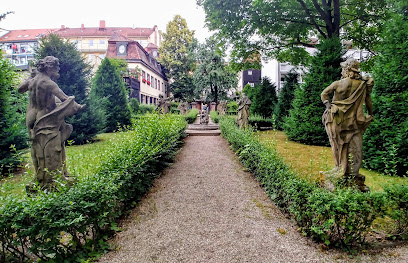
Essential places to dine
Würzhaus Restaurant Nürnberg
Experience exquisite Franconian cuisine at Würzhaus Restaurant in Nürnberg – where tradition meets innovation in every dish.
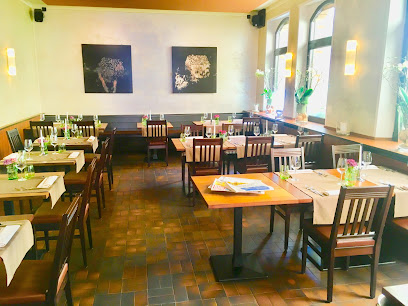
Tadsch Mahal Restaurant
Discover authentic Indian flavors at Tadsch Mahal Restaurant in Nuremberg – where every meal is a celebration of spice and tradition.
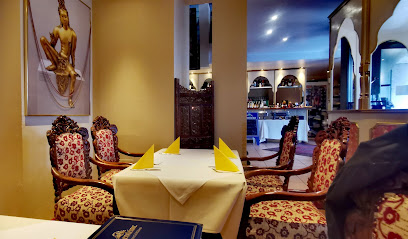
Tibet
Experience the vibrant flavors of India at Tibet in Nuremberg - a culinary gem offering authentic dishes and warm hospitality.
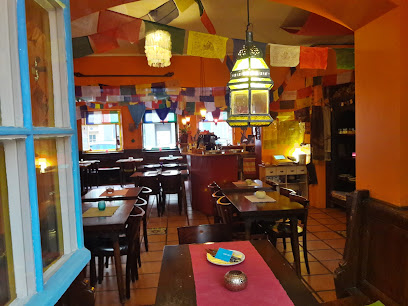
Per bacco
Experience the essence of Italy at Per Bacco in Nuremberg – where every meal is an unforgettable journey through authentic flavors.

Barockhäusle Restaurant, Biergarten, Wein- & Bierstube bei Rosi
Discover the heart of Franconian cuisine at Barockhäusle Restaurant—your go-to destination for authentic German flavors in Nuremberg.

My Thai Restaurant
Experience the rich flavors of Thailand at My Thai Restaurant in Nuremberg—an unforgettable culinary destination.
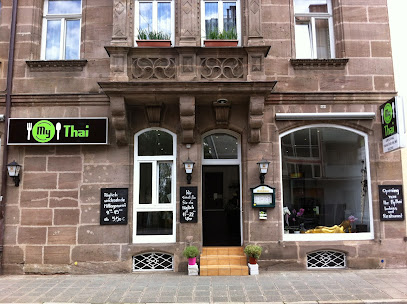
Weinklang - Nürnberg
Experience the best of European and Italian cuisine at Weinklang in Nürnberg – where every meal is a celebration of flavor.
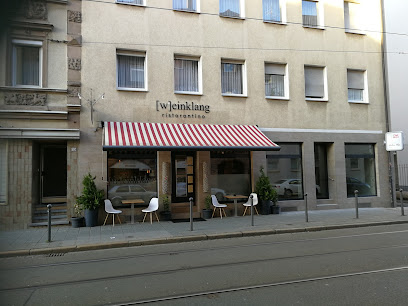
Krua Thai
Experience authentic Thai flavors at Krua Thai in Nuremberg – where every dish tells a story.
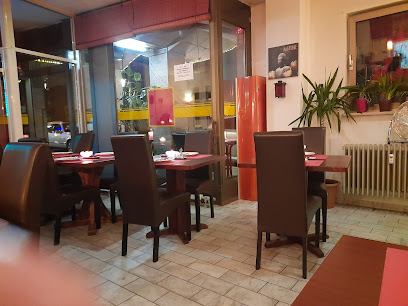
Wonka Restaurant & Kochwerkstatt
Discover innovative flavors at Wonka Restaurant & Kochwerkstatt - Nuremberg's top fusion dining experience blending global cuisines with local ingredients.
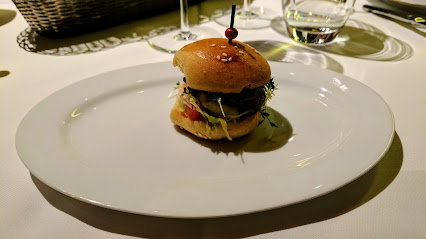
Traditional Italian Food by 0911
Discover authentic Italian cuisine at Traditional Italian Food by 0911 in Nuremberg – where every dish tells a story.
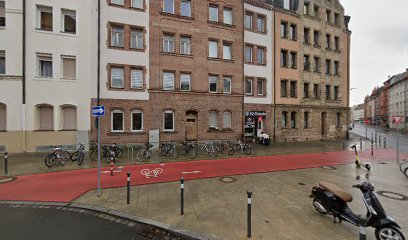
Markets, malls and hidden boutiques
Stromkasten der Liebe
Explore Stromkasten der Liebe in Nuremberg for unique gifts that capture the spirit of romance and creativity, perfect for any occasion.
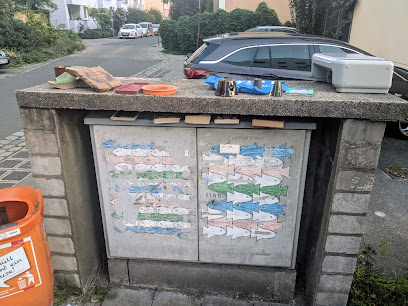
4UND70
Explore 4UND70, Nuremberg's hidden gem for vintage clothing, where every piece tells a story and style meets nostalgia.
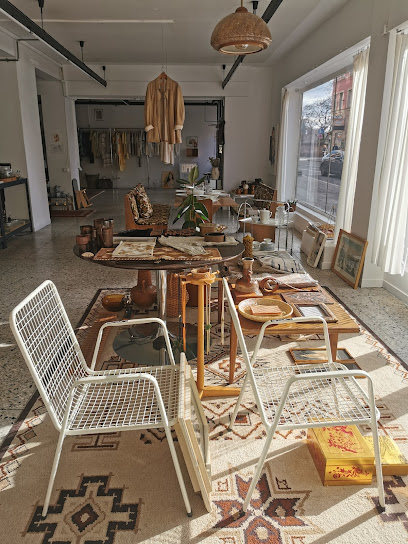
NAMASTE Geschäft für indische u. orientalische Accessoires u. Einrichtung
Explore NAMASTE in Nuremberg for unique Indian and Oriental gifts that capture the essence of vibrant cultures and traditions.
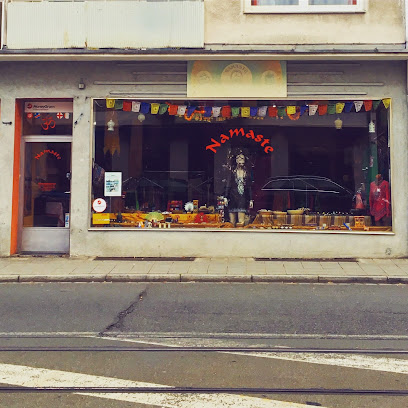
Rajput Mode
Explore Rajput Mode in Nuremberg for unique women's fashion that blends contemporary style with cultural elegance.
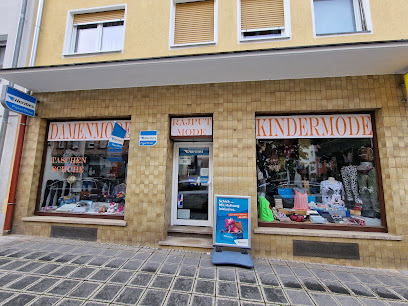
mao Stylinglounge
Experience fashion and beauty in harmony at Mao Stylinglounge, Nuremberg's premier women's clothing store and lounge.
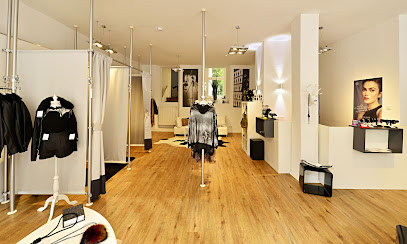
Studio Niena-D
Explore the charm of Studio Niena-D in Nuremberg, where unique souvenirs and local crafts await every curious traveler.

Vintage Concept Store
Explore the charm of retro fashion at Nuremberg's Vintage Concept Store, where every piece tells a unique story.
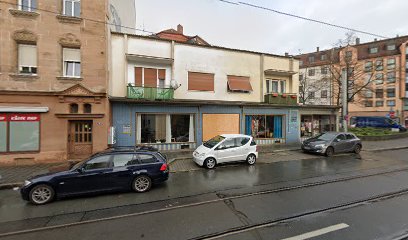
Macrasuu
Explore Macrasuu: A charming store in Nuremberg offering unique local crafts and souvenirs that embody the spirit of the city.

OKSY Boutique & Atelier
Explore OKSY Boutique & Atelier in Nuremberg for unique, stylish clothing and personalized shopping experiences in a charming atmosphere.
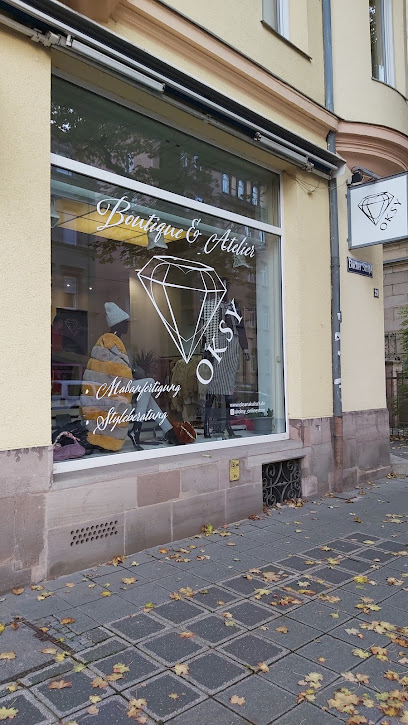
Humansagainsthumanity
Explore the vibrant youth fashion scene at Humansagainsthumanity in Nuremberg, where style and creativity collide.
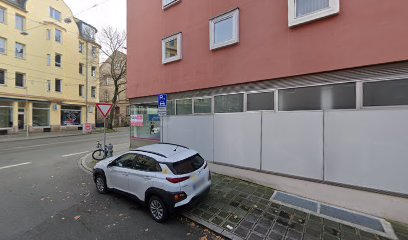
Essential bars & hidden hideouts
Bahama Mama Latin Kitchen | Bar
Discover the vibrant flavors of Latin cuisine at Bahama Mama Latin Kitchen | Bar in Nuremberg, where cocktails and culinary delights await you.
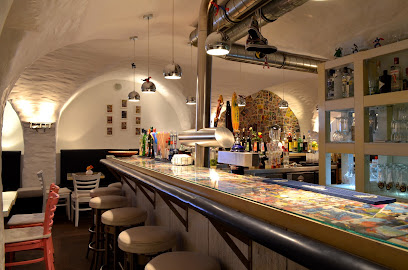
Mata Hari Bar
Experience the vibrant nightlife at Mata Hari Bar, where cocktails, local beers, and live rock music create unforgettable memories in Nuremberg.
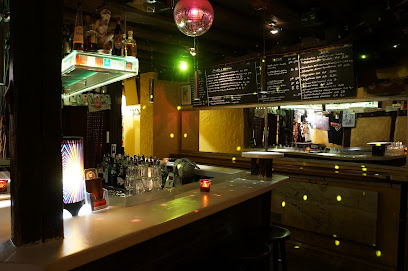
The Flower of Hawaii - Nürnberg
Experience tropical elegance in Nuremberg at The Flower of Hawaii, a luxurious bar and bistro perfect for cocktails and culinary delights.
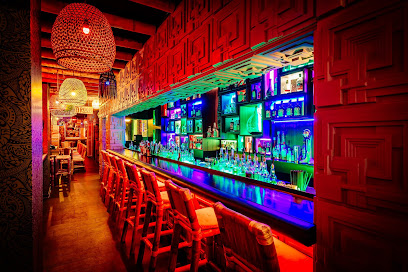
Gelbes Haus
Discover Gelbes Haus in Nuremberg, where innovative cocktails and a cozy atmosphere create the ultimate bar experience for tourists and locals alike.

El Bar
Discover the vibrant culinary experience of El Bar in Nuremberg, where authentic tapas and Spanish wines await in a cozy atmosphere.
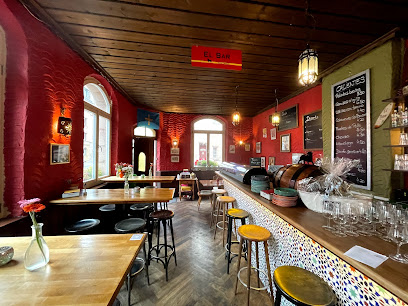
Saigon Bar - Nürnberg
Discover the vibrant nightlife at Saigon Bar in Nürnberg, where cocktails are crafted with care and the atmosphere is always buzzing.

Vintage Bar - Nürnberg
Discover the vibrant ambiance and exquisite cocktails at Vintage Bar, a must-visit nightlife destination in Nuremberg, Germany.
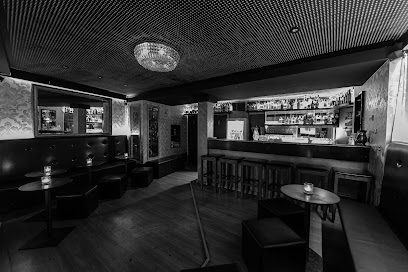
Bar Tante Betty - Nürnberg
Discover Bar Tante Betty in Nuremberg, a live music bar with a vibrant atmosphere and diverse performances that capture the spirit of the city.

BMF Barbetrieb
Discover the lively atmosphere and exceptional drinks at BMF Barbetrieb, a must-visit bar in Nuremberg's vibrant Mitte district.
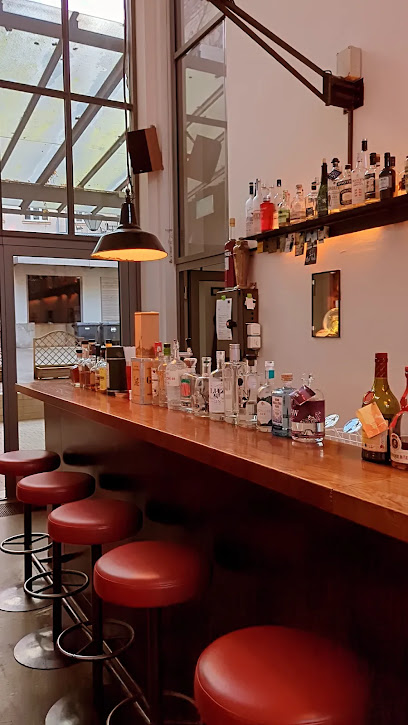
Westbar | natural, fine wine & snacks
Experience the finest selection of natural wines and artisanal snacks at Nuremberg's Westbar, the perfect spot for wine enthusiasts.

Local Phrases
-
- HelloHallo
[hah-loh] - GoodbyeAuf Wiedersehen
[owf vee-der-zay-en] - YesJa
[yah] - NoNein
[nine] - Please/You're welcomeBitte
[bih-tuh] - Thank youDanke
[dahn-kuh] - Excuse me/SorryEntschuldigung
[ent-shool-di-gung] - How are you?Wie geht es Ihnen?
[vee gate es een-en] - Fine. And you?Gut. Und Ihnen?
[goot oont een-en] - Do you speak English?Sprechen Sie Englisch?
[shprek-en zee eng-lish] - I don't understandIch verstehe nicht
[ikh fer-shtay-uh nikht]
- HelloHallo
-
- I'd like to see the menu, pleaseIch möchte bitte die Speisekarte sehen
[ikh merkht-uh bih-tuh dee shpi-zuh-kahr-tuh zay-en] - I don't eat meatIch esse kein Fleisch
[ikh ess-uh kine fli-sh] - Cheers!Prost!
[prohst] - I would like to pay, pleaseIch möchte bitte bezahlen
[ikh merkht-uh bih-tuh buh-tsah-len]
- I'd like to see the menu, pleaseIch möchte bitte die Speisekarte sehen
-
- Help!Hilfe!
[hil-feh] - Go away!Gehen Sie weg!
[geh-en zee vekh] - Call the Police!Rufen Sie die Polizei!
[roo-fen zee dee po-lee-tsai] - Call a doctor!Rufen Sie einen Arzt!
[roo-fen zee i-nen ahrts] - I'm lostIch habe mich verloren
[ikh hah-buh meesh fer-loh-ren] - I'm illIch bin krank
[ikh been krunk]
- Help!Hilfe!
-
- I'd like to buy...Ich möchte ... kaufen
[ikh merkht-uh ... cow-fen] - I'm just lookingIch schaue nur
[ikh show-uh noor] - How much is it?Wie viel kostet das?
[vee feel koh-stet dahs] - That's too expensiveDas ist zu teuer
[dahs ist tsoo toy-er] - Can you lower the price?Können Sie den Preis senken?
[kern-en zee den prize zank-en]
- I'd like to buy...Ich möchte ... kaufen
-
- What time is it?Wie spät ist es?
[vee shpeht ist es] - It's one o'clockEs ist ein Uhr
[es ist iyn oor] - Half past (10)Halb (zehn)
[halb (tsayn)] - MorningMorgen
[mor-gen] - AfternoonNachmittag
[nahk-mit-tahk] - EveningAbend
[ah-bent] - YesterdayGestern
[ges-tern] - TodayHeute
[hoi-tuh] - TomorrowMorgen
[mor-gen] - 1eins
[ayns] - 2zwei
[tsvay] - 3drei
[dry] - 4vier
[feer] - 5fünf
[foonf] - 6sechs
[zeks] - 7sieben
[zee-ben] - 8acht
[akht] - 9neun
[noyn] - 10zehn
[tsayn]
- What time is it?Wie spät ist es?
-
- Where's a/the...?Wo ist ein/der...?
[vo ist iyn/dehr] - What's the address?Was ist die Adresse?
[vahs ist dee ah-dreh-suh] - Can you show me (on the map)?Können Sie mir zeigen (auf der Karte)?
[kern-en zee meer tsay-gen (owf dehr kar-tuh)] - When's the next (bus)?Wann kommt der nächste (Bus)?
[vahn kommt dehr naykhs-teh (boos)] - A ticket (to ....)Eine Fahrkarte (nach ....)
[i-nuh fahr-kahr-tuh (nakh)]
- Where's a/the...?Wo ist ein/der...?
History of St. Johannis
-
St. Johannis, a historic neighborhood in Nuremberg, has its roots tracing back to the medieval period. The area was once an independent village, known as St. Johannis, which developed around the St. John's Church (Johanneskirche) built in the 13th century. This church, a fine example of Romanesque architecture, became a focal point for the community and reflected the importance of religion during this time.
-
During the 16th century, the Protestant Reformation swept through Nuremberg, and St. Johannis was no exception. The area saw significant changes as the Lutheran faith took hold, leading to a transformation in religious practices and community life. The Johanneskirche became a central place for Protestant worship, embodying the shift in theological beliefs and the cultural landscape of the neighborhood.
-
The 19th century marked a period of rapid industrialization for Nuremberg, and St. Johannis was affected by this transformation. The neighborhood became increasingly urbanized as factories and workshops were established, attracting a growing population of workers. This influx led to the construction of new residential areas and the expansion of infrastructure, reflecting the broader economic changes occurring in the city.
-
St. Johannis, like much of Nuremberg, suffered extensive damage during World War II, with many buildings destroyed or severely damaged. Post-war reconstruction efforts aimed to restore the neighborhood while also modernizing its infrastructure. This era brought about a blend of historical preservation and contemporary development, leading to the unique architectural landscape seen today.
-
In recent years, St. Johannis has experienced a cultural renaissance, characterized by the revitalization of its historic sites and the promotion of local arts. The neighborhood hosts various cultural events and festivals, celebrating its rich heritage and fostering community engagement. The blend of history, art, and modern living continues to shape the identity of St. Johannis, making it a vibrant part of Nuremberg.
St. Johannis Essentials
-
St. Johannis is easily accessible from other neighborhoods in Nuremberg. The U-Bahn (subway) line U2 connects St. Johannis to the city center, with a direct ride from Hauptbahnhof (Central Station) taking about 10 minutes. Alternatively, several bus lines, including the 36 and 37, serve the area. If you are arriving from the Nuremberg Airport (NUE), take the U2 line towards Röthenbach and transfer at Hauptbahnhof for a direct route to St. Johannis.
-
St. Johannis is well-served by public transport, making it easy to navigate the neighborhood and beyond. The U-Bahn and buses run frequently, providing convenient access to attractions. Bicycles are a popular mode of transport, and bike lanes are available throughout the area. For a more leisurely exploration, consider renting a bike from local shops. Walking is also a pleasant way to experience the local charm and historical architecture.
-
St. Johannis is generally a safe neighborhood for tourists; however, standard precautions should be taken. Avoid poorly lit areas at night and be mindful of your belongings, particularly in crowded spaces. While there are no specific areas of high crime targeting tourists, it is best to stay alert, especially in busier areas around public transport hubs.
-
In case of an emergency, dial 112 for police, fire, or medical assistance. The local police station is located in the city center, and there are several hospitals and clinics in Nuremberg. It is advisable to have travel insurance that covers medical emergencies. Pharmacies are available in St. Johannis for over-the-counter medications and minor health issues.
-
Fashion: Do dress appropriately for visits to churches and religious sites, covering shoulders and knees. Avoid overly casual attire, especially in dining settings. Religion: Do show respect at local places of worship; silence your phone and avoid loud conversations. Public Transport: Do offer your seat to elderly or disabled passengers. Don’t eat or drink on public transport. Greetings: Do greet with a friendly 'Hallo' or a handshake. Don't be overly familiar unless invited. Eating & Drinking: Do try local dishes like 'Nürnberger Würstchen'. Don't refuse food offerings from locals; it's considered impolite.
-
To experience St. Johannis like a local, visit the weekly market at the Johannisplatz for fresh produce and regional delicacies. Engage with local artisans and shop owners, as many are eager to share the history of their crafts. For a unique experience, explore the picturesque streets and gardens in the area, especially the historic St. Johannis Church and the surrounding parks. Try to visit during local festivals for a taste of regional culture.
Nearby Cities to St. Johannis
-
Things To Do in Rothenburg ob der Tauber
-
Things To Do in Wurzburg
-
Things To Do in Munich
-
Things To Do in Karlovy Vary
-
Things To Do in Stuttgart
-
Things To Do in Plzeň
-
Things To Do in Erfurt
-
Things To Do in Heidelberg
-
Things To Do in Frankfurt
-
Things To Do in Leipzig
-
Things To Do in Salzburg
-
Things To Do in Bregenz
-
Things To Do in Kitzbühel
-
Things To Do in Innsbruck
-
Things To Do in Český Krumlov

